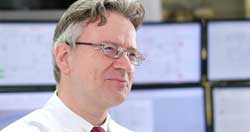PRA Chinese
Rubber Journal Asia Injection Moulding Asia Energy, Oil & Gas Asia
VISIT OUR OTHER SITES:
PRA Chinese
Rubber Journal Asia
Injection Moulding Asia
Energy, Oil & Gas Asia
Evonik and LIKAT achieve breakthrough in carbonylation chemistry

A research team with the participation of German chemicals firm Evonik has achieved a breakthrough in the field of carbonylation chemistry. Carbonylation is one of the most important types of reaction in the chemical industry. It involves the catalysed introduction of a CO group (carbonyl group) into organic compounds. For more than 60 years, science and industry had been looking for a way to implement the now successful reaction step.
A team was led by Prof. Dr. Matthias Beller, Director of the Leibniz Institute for Catalysis, Rostock, and Prof. Dr. Robert Franke, Evonik Performance Materials. The scientists have succeeded in double carbonylating the starting material 1,3-butadiene directly to produce adipates (salts of adipic acid). Adipates can currently only be produced by a complex multi-stage, energy- and cost-intensive synthesis. This involves not only the use of many chemicals, but also releases climate-relevant nitrogen oxides (NOx), which are among the main greenhouse gases.
The potential benefits from this innovation are great: adipates are produced annually on a large scale in the millions of tonnes and serve as starting materials for the manufacture of numerous products such as plasticisers, perfumes, lubricants, solvents, various active pharmaceutical ingredients and above all nylon.
With their new process, the participating project partners are laying the foundation for a more environmentally friendly and cost-effective large-scale method of synthesis.
The key to the breakthrough development of a new palladium catalyst based on a specific phosphine ligand (HeMaRaPhos). This ligand binds to palladium, resulting in a highly selective, efficient and long-lived catalyst that can result in 95% yields of adipic acid derivatives under industrially feasible conditions.
Due to the special importance of this innovation, the journal “Science” published the results of the project https://science.sciencemag.org/content/sci/366/6472/1514.full.pdf.
What’s the next step? The large-scale evaluation of economic and technical aspects will start right away.
(PRA)
Subscribe to Get the Latest Updates from PRA Please click here
©2020 Plastics and Rubber Asia. All rights reserved.

©2020 Plastics and Rubber Asia. All rights reserved.
Home Terms & Conditions Privacy Policy Webmail Site Map About Us











































































